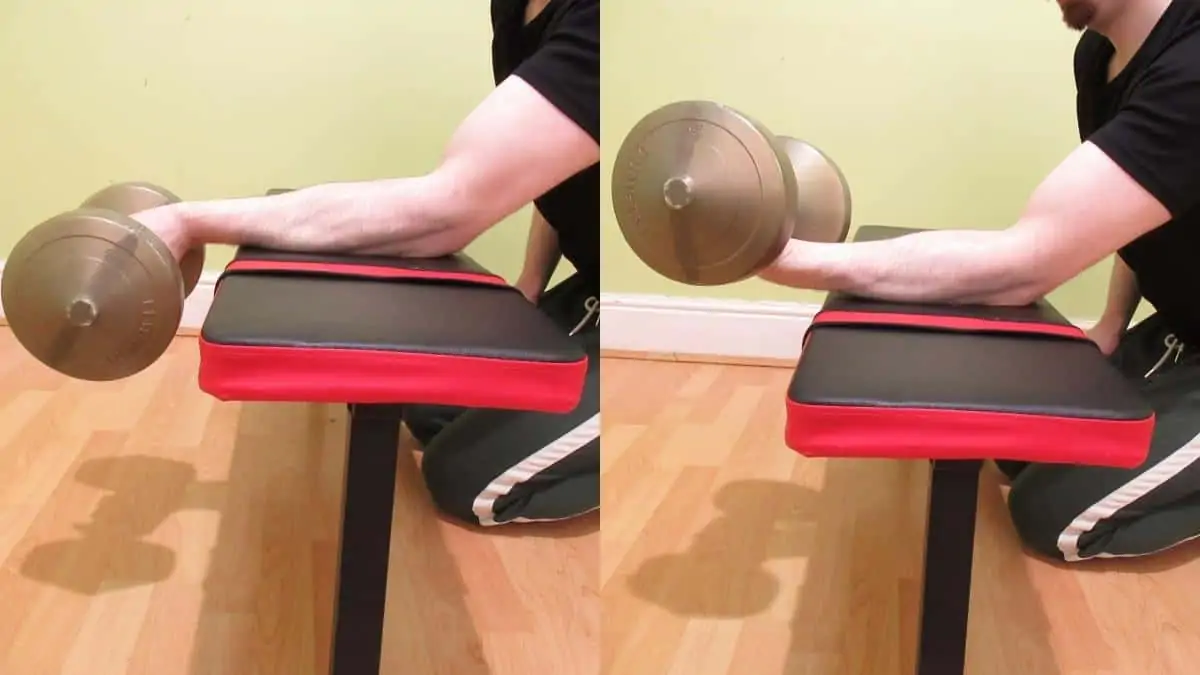The single dumbbell wrist curl is one of the most effective forearm exercises that you can do because it ensures that each arm receives equal work.
This underutilized forearm drill has countless benefits to offer. So after the step-by-step tutorial, we’ll get straight into the training tips so that you can get a better workout right away.
Related post: dumbbell exercises for forearms │baseball forearm workout
How to do the single dumbbell wrist curl
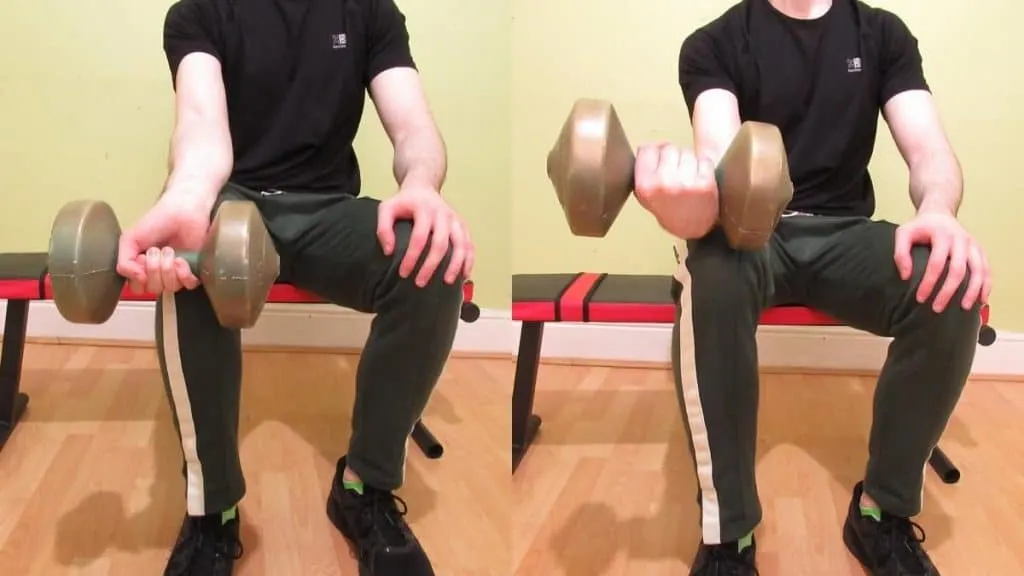
- Hold a dumbbell in one hand and then kneel next to a weight bench*.
- Rest the top of your forearm on the bench so that your palm is facing up.
- Let your hand hang off the edge of the bench.
- Lower the weight towards the ground by bending your wrist until you feel a nice—but not excessive—forearm stretch.
- Bring the weight back up by flexing your forearm and squeezing hard at the top of the rep.
- Repeat for 2-3 sets of 10-12 reps and don’t forget your other arm!
*If you don’t have access to a weight bench, you can also do this exercise over a table or desk, providing that you still have access to a dumbbell. Alternatively, use your thigh, like you can see in the picture.
Single dumbbell wrist curl training tips
Since the one arm dumbbell wrist curl is a pure isolation exercise, there are some very specific training tips that you need to implement to get the best results.
Don’t use momentum
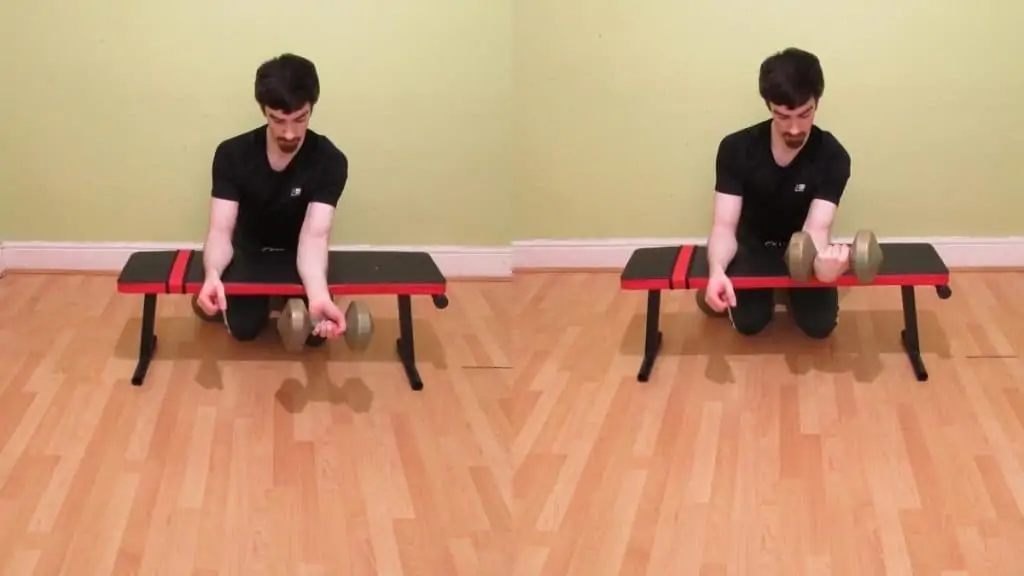
When you let the weight drop during the eccentric, you’re robbing your muscles of resistance. Naturally, this kind of sloppy form usually results in sub-optimal muscle growth.
Instead, let your forearms control every part of the rep. You know that your form is good if you’re able to pause the rep at any point because this ability to pause is indicative of having proper control of the weight.
See also: triceps biceps and forearms workout
Get a full range of motion
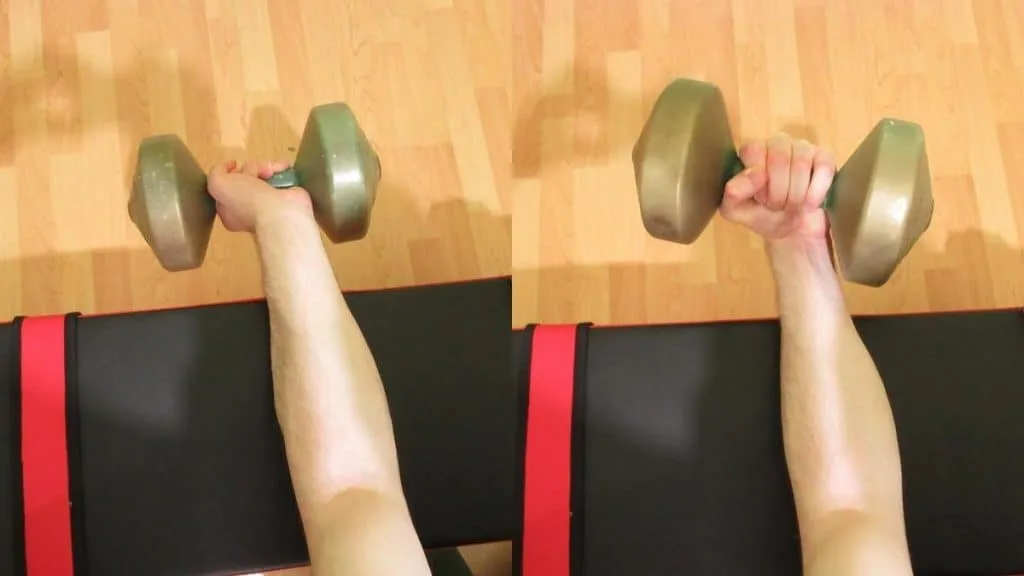
The wrist curl range of motion (ROM) is tiny. So the last thing that you want to do is to shorten it even more.
So, lighten the weight and focus on getting a full stretch and really squeezing your forearm flexors at the top of each rep. You’ll develop a stronger mind-muscle connection this way, and if you train consistently, you’ll also enjoy gains in tangible muscle growth.
Stick to high reps
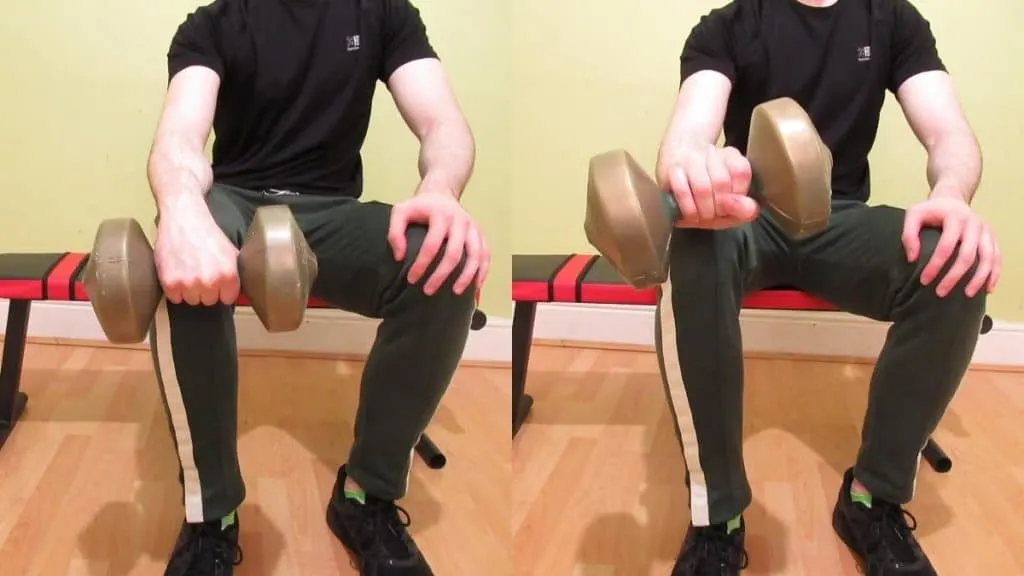
As mentioned, the single dumbbell wrist curl has a very small ROM. So in order to get enough time under tension to stimulate new growth, you pretty much have to stick to high reps.
Plus, using low reps naturally means lifting heavy weights. And with a joint as small and vulnerable as the wrist, the last thing that you want to do is subject it to heavy sets of 6 reps.
Instead, stick to sets of 12-20 repetitions and you’ll be golden.
Read more: bicep and forearm workout │exercises for forearms for women
Single dumbbell wrist curl benefits
Many people do the seated barbell wrist curl as their primary forearm exercise. And while there’s nothing wrong with this approach, unilateral training has some very underappreciated benefits, too.
Reduced muscular imbalances
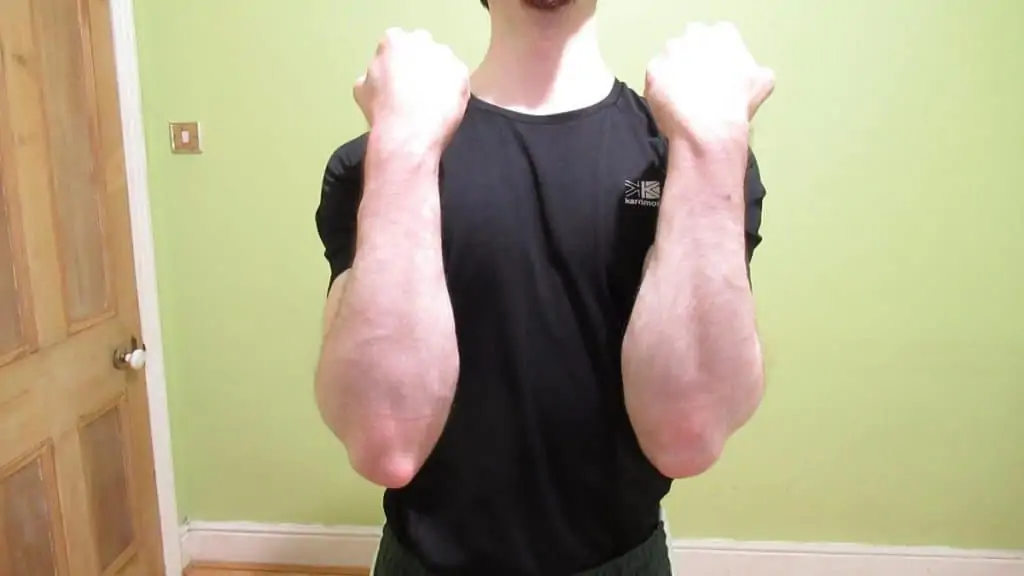
By training each forearm separately, you naturally reduce the chance of developing unsightly muscle imbalances. [1]
Moreover, this training style can also help to correct existing muscular imbalances and thus improve the symmetry of your physique.
Simple setup
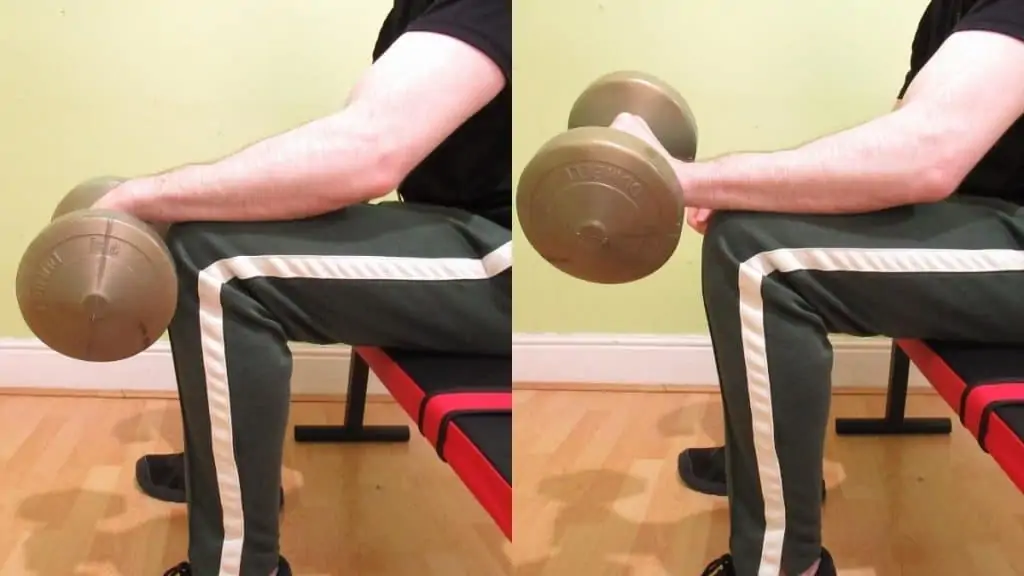
I like doing behind the back barbell wrist curls. But the setup is complicated because it’s hard to get a good grip on the bar since you basically have to deadlift it off the floor.
Also, when you have to position a heavy bar over a bench like in the barbell version, you’re putting your wrists in a compromising position. [2]
But with the one arm dumbbell wrist curl, it’s extremely easy to get the weight into position. Therefore, you can get on with training sooner while also reducing the strain on your wrist joints.
Great for supersets
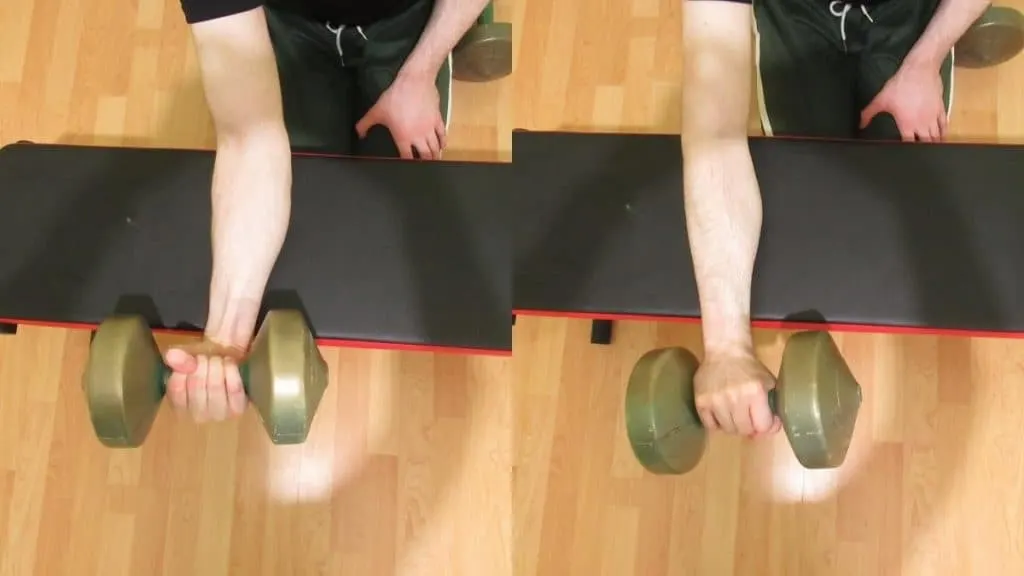
No freaky pair of forearm flexors is complete without an equally impressive set of wrist extensors, which are the often striated muscles that reside on the top of your lower arm.
That’s why this exercise is so effective. As soon as you’ve done regular wrist curls for the flexors, you can save time and level up your pump by diving straight into the reverse variation.
Again, this approach also ensures that you achieve proportional forearm development, which we made a priority in our guide to forearm exercises for tennis and our arm wrestling forearm workouts article because players of both sports tend to have one arm that’s stronger than the other.
Single dumbbell wrist curl alternatives
As we’ve learned, the single arm dumbbell forearm curl has many benefits. But that’s not to say that there aren’t other useful exercises that you can incorporate into your routine.
- Barbell reverse wrist curls
- Cable forearm curls
- Dumbbell reverse wrist curl
- Dumbbell wrist curl
- EZ bar forearm curl
- Forearm plate curl
- Palms down dumbbell wrist curls
- Standing reverse wrist curls
- Standing forearm curls
- Wrist roller
- Wrist twist exercise
The verdict on single dumbbell wrist curls
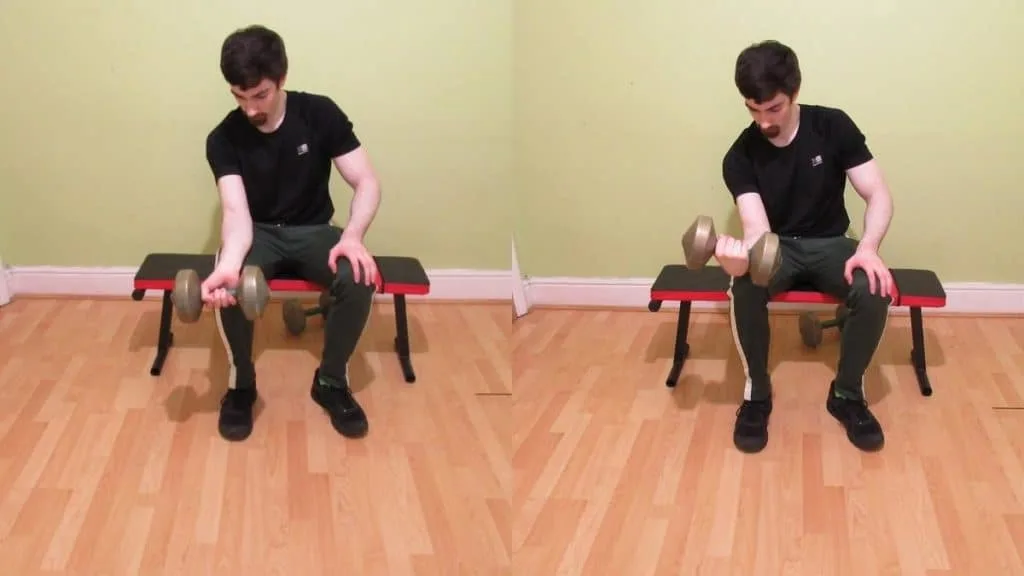
The single dumbbell wrist curl is a fantastic isolation exercise for the forearms because it ensures that each arm receives equal work. This, in turn, helps to prevent future—and reduces existing—muscle imbalances.
Besides helping you to develop a symmetrical physique, the one arm dumbbell wrist curl is also incredibly straightforward to setup. You don’t need to lug a heavy barbell over a bench and put your wrists in jeopardy.
Instead, you simply rest your arm on a cushioned weight bench (or desk or table) and lift. Strengthening your lower arms couldn’t be easier, which is why I think this movement is so underrated.
References
- Stastny, P., Lehnert, M., & Tufano, J. J. (2018). Muscle Imbalances: Testing and Training Functional Eccentric Hamstring Strength in Athletic Populations. Journal of Visualized Experiments, 135, 12. https://doi.org/10.3791/57508
- Wrist injuries: Overview – InformedHealth.org – NCBI Bookshelf. (2020, September 24). National Center for Biotechnology Information. https://www.ncbi.nlm.nih.gov/books/NBK563103/

